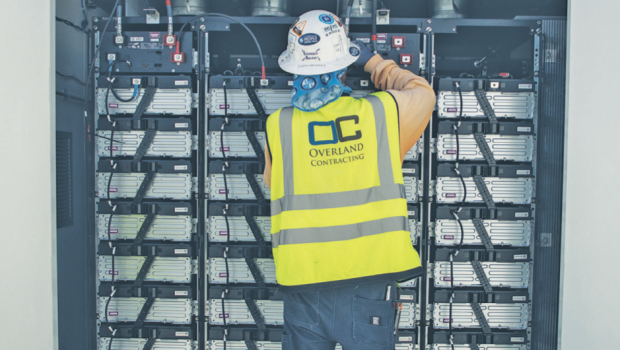Batteries, the sun and the burning of household garbage all contribute to mitigating pollutants in the atmosphere.
As Florida, the U.S. and the world work to reduce carbon's impact on environmental health, technological innovations contribute to greater energy efficiency and more resilient infrastructure.
In Florida, renewable energy technology is playing a significant role in minimizing pollutants in the environment, mostly from solar energy installations, biomass, waste-to-energy technology and more recently, battery power.
Energy storage from renewable sources helps reduce pollution by providing power for residents with little to no negative impact on the environment.
It remains an ongoing priority of the rural electric cooperative SECO Energy and investor-owned utility Duke Energy, the companies that provide power to The Villages.
The need for energy efficiency is apparent from anticipated increases in demand for electricity.
Florida's utilities expect more than 1 million new residential and more than 50,000 new commercial energy customers this decade, and their electricity generation needs to increase by 7.6% by 2027 to meet that demand, according to the Florida Energy and Climate Plan, issued by the Florida Department of Agriculture and Consumer Services.
"Embracing renewable, sustainable, clean energy technologies creates an opportunity for Florida to develop a clean energy industry within our state – an industry that will provide good jobs and stimulate the manufacturing industry," Agriculture Commissioner Nikki Fried stated in the report.
Upon the completion of future projects, Florida is expected to become a leader in renewable plus storage capacity, which is a hybrid of traditional renewable energy technology like solar and wind combined with energy storage from battery systems.
By the end of 2023, Florida's capacity is expected to approach 0.75 gigawatts. That would make it the No. 4 state for hybrid renewable-plus-battery storage generation after Texas, Nevada and California, according to the Energy Information Administration.
SECO and Duke are among those working to bring this possibility to reality.
SECO, already a leader among rural electric cooperatives in solar energy installations, is bolstering its renewable capacity. Its CEO, Jim Duncan, said in November that Seminole Electric Cooperative, a wholesale power provider that generates power for SECO, plans to add 300 megawatts of solar power by entering into purchased power agreements.
That, combined with plans to replace a generating station in Putnam County with a new natural gas-fired plant, will lower carbon dioxide emissions in 2024 by 48% from 2005 levels, he said.
In addition to new solar energy installations, Duke is building new battery power sites. It completed the construction of an 18-megawatt battery storage system in Lake Placid in December 2021.
Projects to add an 11-megawatt system in Trenton, 5.5-megawatt systems in Cape San Blas and Jennings, and a 3.5-megawatt microgrid of battery and solar power at John Hopkins Middle School in St. Petersburg remain ongoing, Duke spokeswoman Ana Gibbs said.
Beyond renewable energy technology, waste-to-energy — the burning of household garbage, which also includes air pollution control systems to detoxify emissions before they're released into the air — is also popular in Florida.
In fact, household garbage from The Villages and surrounding communities goes to a waste-to-energy plant — Covanta's Lake County plant in Okahumpka.
Covanta's plants manage solid waste through energy recovery and advanced air pollution control in just one hour. That contrasts with solid waste in a landfill, which could take at least 100 to 150 years to degrade, said Patrick Walsh, area asset manager for Covanta's Lake County, Pasco County and Tulsa, Oklahoma plants.
Any trash that's accepted at Covanta's plant — anything hazardous is separated for recycling or proper disposal — is loaded onto a system that stokes and agitates it to ensure continuous combustion at temperatures around 2,000 degrees Fahrenheit, he said.
Air pollution control starts with an automated combustion control system that ensures continuous, safe operations, Walsh said. Flue gas is treated in a scrubber system that uses hydrated lime and activated carbon to control pollutants. A baghouse with thousands of filter bags captures particulate matter that remains from the process.
Waste to energy serves a purpose in reducing the negative climate change impacts of trash left to decompose in landfills.
By diverting trash from landfills, waste-to-energy plants play a
part in reducing methane emissions, Walsh said. Methane can be up to 86
times stronger than carbon dioxide over a 20-year period, according to
the International Panel of Climate Change.
Taken together, these technologies play small parts in a big effort to make the land, air and water at least a little cleaner.
Senior writer Michael Salerno can be reached at 352-753-1119, ext. 5369, or michael.salerno@thevillagesmedia.com.








Gloss